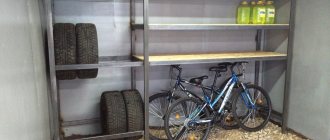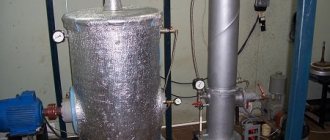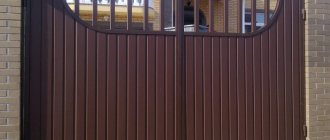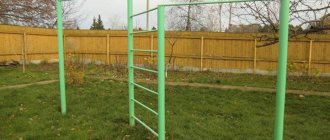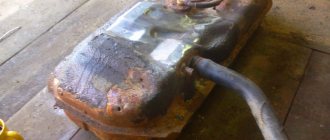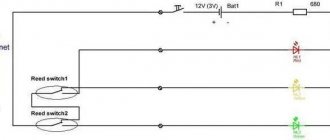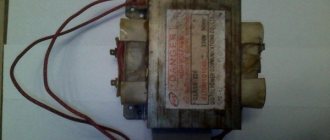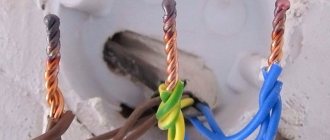How to weld a stainless steel tank with your own hands - Metals, equipment, instructions
When performing a technological operation such as welding stainless steel, it is important to take into account both the physical properties of the material and its chemical composition. Only in this case can you count on the connection being made efficiently and reliably.
Argon welding of stainless steel
Difficulty factors for welding stainless steel parts
Welding stainless steel is complicated by the fact that this material belongs to the category of high-alloy alloys, which means that its composition contains elements in fairly large quantities that affect its basic properties.
In stainless steel, in particular, this element is chromium. Its content in this alloy can be 12–30%.
Chromium, along with elements such as nickel, titanium, manganese and molybdenum, forms the anti-corrosion properties of stainless steel, but at the same time gives it other features that affect weldability.
For those who do not like to read long articles and delve into technical details, we suggest you immediately watch two videos with the most relevant options for welding stainless steel for a home craftsman - with an electrode using an inverter and again with an inverter, but in a shielding gas (argon).
Welding of stainless steel must be carried out taking into account the following specific characteristics of this material. Sufficiently high coefficient of linear expansion
For this reason, welding stainless steel is always accompanied by significant deformation of the parts being joined.
In some cases, when the parts being welded are of significant thickness and there is no gap between them, such deformations can even lead to the appearance of large cracks.
Low thermal conductivity
The thermal conductivity of stainless steel is 1.5–2 times lower than that of low-carbon alloys. This feature of the material leads to the fact that the parts being connected in the welding zone are melted even at lower (15–20%) current strengths than when welding products made of low-carbon steel.
Intergranular corrosion
With strong heating (more than 500 degrees Celsius), so-called intergranular corrosion occurs in stainless steels. This happens because layers consisting of chromium and iron carbide begin to form at the edges of the grains of the metal structure.
This phenomenon can be avoided not only by careful selection of the welding mode, but also by forced cooling of the stainless steel parts being welded, for which you can use ordinary water.
However, it should be borne in mind that only parts made of chromium-nickel steels that have an austenitic internal structure can be cooled with water.
Overheating of electrodes with chromium-nickel rods
Due to the low thermal conductivity of the materials being joined and their increased electrical resistance, welding of stainless steel parts is accompanied by strong heating of the electrodes, the rods of which have a chromium-nickel composition. To avoid this undesirable phenomenon, use electrodes for welding stainless steel up to 35 cm long.
Welding electrodes Sabaros ME 101 3.2 mm for welding stainless steels
The most common methods of welding stainless steel
Welding of stainless steel products characterized by a high chromium content can be performed using several technologies. This includes, in particular, the following types of welding:
- argon arc (using a tungsten electrode and AC/DC TIG modes);
- performed in MMA mode with coated electrodes;
- semi-automatic arc welding in an argon environment, carried out in MIG mode and using stainless steel wire;
- so-called cold welding for stainless steel, performed under high pressure (the name of this technology is due to the fact that it does not involve melting the metal during the process of joining it);
- seam technology and resistance spot welding.
The technology for welding stainless steel parts involves thoroughly degreasing their surfaces using acetone or aviation gasoline. This is done in order to reduce the porosity of the seam being performed, to make the welding arc more stable, and to thoroughly clean the edges of the parts being joined.
Only after thorough cleaning can you begin to perform the operation using the chosen method. There are several basic methods for welding stainless steel parts, as well as technologies that are used quite rarely.
In any case, the decision on how to weld stainless steel should be based on the specific conditions and requirements for the joint being formed.
Welding with coated electrodes (MMA)
Welding stainless steel parts using MMA technology, which involves the use of coated electrodes, is the most common technology. This method is quite simple, it can be used at home, but it does not allow you to obtain the highest quality seam.
Conveniently, this kind of stainless steel welding can be done even at home, but for this you will need a special welding machine called an inverter.
In order for welding stainless steel with an inverter to produce a highly reliable connection, it is necessary to select the correct electrode for a specific grade of stainless steel.
All electrodes used to weld stainless steel products are divided into two main types:
- with a rutile coating based on titanium dioxide (welding with such electrodes, which provide small metal spatter and a stable arc, is performed with direct current and reverse polarity);
- with a coating based on magnesium and calcium carbonate (with such electrodes, stainless steel is welded using direct current of reverse polarity).
To understand which electrodes to use to weld stainless steel, just look at GOST 10052-75, which presents all types of such consumables, and also stipulates which one should be used for working with metal of a specific chemical composition. In order to select stainless steel electrodes that meet the requirements of this GOST, it is enough to know the grade of the metal from which the parts need to be connected.
All requirements for electrodes for welding stainless steel can be found by downloading GOST 10052-75 for free in pdf format from the link below.
Manual and semi-automatic welding of stainless steel in argon (AC/DC TIG, MIG)
To perform manual welding of stainless steel in an argon environment, tungsten electrodes are used.
This technology, even at home, allows you to obtain high-quality and reliable connections for products that are not very thick.
Welding with such electrodes on stainless steel is used mainly for installing communications from pipes through which gases or various liquids will be transported under pressure.
Austenitic stainless steel should be welded with particular care and caution
This technology has certain features.
- To ensure that tungsten, from which stainless steel electrodes are made, does not get into the molten metal in the welding zone, the arc is ignited in a non-contact manner. If it is not possible to do this directly on the part, then the arc is lit on a special coal plate and carefully moved to the workpieces to be joined.
- Welding stainless steel using this method can be performed with both direct and alternating current.
- The modes are selected depending on the thickness of the parts being connected. Such modes, in particular, include the parameters of the cross-section of the tungsten electrode, the diameter of the wire used as an additive, current parameters (strength and polarity), shielding gas consumption, and welding speed.
- It is very important that the alloy level of the filler wire is higher than that of the parts being joined.
- During the welding process, stainless steel electrodes should not make oscillatory movements. If this requirement is neglected, this may lead to disruption of the welding zone and oxidation of the metal in its area.
By using this technology, the consumption of tungsten electrode can be reduced. To do this, you need to keep the argon supply open for some time (10–15 seconds) after the welding process is completed. This procedure helps protect the hot tungsten electrode from active oxidation.
Semi-automatic welding of stainless steel in an argon environment, in fact, has few differences from the conventional manual method. Its main difference is that the wire is fed into the welding zone using special equipment. Thanks to mechanization, the process proceeds much more accurately and at greater speed.
Thanks to the use of semi-automatic equipment, the following welding techniques for stainless steel parts can be implemented:
- jet transfer method, which allows you to effectively weld parts of large thickness;
- short arc welding - for connecting parts of small thickness;
- Pulse welding is a universal technology that allows you to obtain high-quality and reliable connections and is the most profitable option financially.
Tig welding of stainless steel
Other stainless steel welding technologies
There are several other methods of welding stainless steel that demonstrate themselves better in certain situations, that is, they are not universal. This includes the following methods, which involve the use of special equipment.
Welding stainless steel using a laser beam
This welding method, which even looks very impressive on video, has a number of significant advantages: the metal in the welding zone does not lose its strength due to excessive temperature exposure, cools quickly, cracks do not appear on it, and grains of minimal size are formed in its structure . Equipment for laser welding and the technology itself are widely used in various industries (automobile and tractor manufacturing, installation of pipe communications, etc.).
general information
Why are water containers made of metal or any other material needed? The answer to this question is obvious, but for some it remains open. The fact is that everyone uses storage tanks differently. Their purpose is to collect and store water for later use. How and in what form you will do this is up to you to decide.
The tank can have different shapes, depending on its purpose. A regular rectangular large tank can be used to collect rainwater. For a summer shower, you can use a flat, low tank that can be easily mounted on top of a metal frame. It all depends on the purpose of use.
Often, ordinary metal barrels are used as such a storage tank. This is a practical and inexpensive option, but not always convenient. Especially because of its open top, through which insects enter the water, and plants and rust form on the walls of the tank. It can also be used to collect rainwater only if you have drains and it is possible to lead the pipe directly to the barrel.
In order not to have to worry about barrels, craftsmen make homemade metal tanks. They have a simple design and low cost. Below you can see one of the possible drawings of a storage tank. This container is small in size, but quite spacious and holds up to 200 liters of water.
Welding stainless steel at home and more
When welding stainless steel, you need to take into account some features of the alloys:
- high coefficient of thermal expansion, stainless steel parts must be folded with a gap;
- high thermal conductivity of stainless steel, so as not to create a high temperature in the working area, workpieces with a carbon content of less than 0.2% are preheated, the welding current is reduced by 20%;
- high resistance of stainless steels, the metal heats up quickly, so special electrodes 35 cm long are selected for welding work;
- When heating chromium-nickel stainless steel, heat-resistant films of oxides of alloying elements are formed, which makes the welding process more difficult, and the working area must be cooled.
It is necessary to weld stainless steel at home, taking into account the characteristics of steel, otherwise the connection will turn out to be of poor quality.
In order to properly weld stainless steel, a number of works must be carried out before carrying out work:
- the workpieces are first cleaned of dirt and dust, the oxide layer is removed from the surface to a metallic shine with a brush, fine file or sandpaper;
- edges thicker than 4 mm are cut with a grinder or cut at an angle;
- stainless steel thicker than 7 mm is preheated, the temperature depends on the grade of steel;
- the parts are laid with a gap, its size is determined from the reference book.
Before welding the seam, the joint is clamped in several places so that the parts do not move during work.
Welding stainless steel with coated electrodes
The MMA electric arc method is most often used for stainless steel if there are no special requirements for the connections. When choosing electrodes, they are guided by GOST 10052−75. The standard specifies how to cook stainless steel alloyed with chromium, nickel, iron, and refractory metals. Electrodes are divided into two groups.
Rods with the main type of coating, which includes calcium and magnesium carbonates, are used to cook alloyed metal with reverse polarity, connect them to “+”. Rutile coating contains titanium oxide; such rods are used with current of any polarity, connected to the “+” and “-” contacts.
They splash less and stick less often.
Semi-automatic welding of stainless steel
The MIG technology with the supply of carbon dioxide into the melt area will help to weld stainless steel with high quality using filler wire. The semi-automatic device ensures uniform supply of the additive to the working area. The wire is selected according to the type of alloy - the main alloying component.
They produce a copper-plated additive, a powder additive with a channel filled with flux, and an aluminum additive. A rectifier or inverter is used as a current source. The arc is created in much the same way as in electric arc welding. The “+” contact is connected to the burner, through which it reaches the wire feeding mouthpiece.
Simultaneously with the wire, a gas mixture is supplied, forming a protective atmosphere.
Semi-automatically cooks parts:
- up to 4 mm (short arc);
- thicker than 4 mm using the jet transfer method.
Pulse welding with minimal melt pool spatter is applicable to stainless steel of any thickness.
Manual and semi-automatic in argon environment
TIG (manual) and MIG (semi-automatic) technology is used to work with thin stainless steel and involves the use of tungsten refractory electrodes to create an electric arc. Argon supply begins before the arc ignites and ends 20 seconds after extinction.
Cold welding under high pressure
The technology is based on the ability of alloys to convert kinetic energy into thermal energy. When compressed, the internal structure of the steel changes with the release of energy, and the stainless steel becomes plastic.
One layer is pressed into another to form a diffuse layer. Welding of stainless steel is carried out using one-sided or two-sided pressure. Special stamps are installed on the presses.
The results are very neat point or linear connections without scale, cracks, or internal stresses in the working area.
Resistance welding of stainless steel
Current is supplied to two non-consumable electrodes made of non-ferrous alloys, and the workpieces are placed between them. When current is applied, the electrodes are compressed with force.
Stainless steel is welded only in the contact zone, the arc pierces the parts through and melts. Manual welding pliers are used for welding thin stainless steel up to 2 mm.
Thicker workpieces are connected using devices with amplifiers so that the contact zone can be pressed. A point the size of the electrode area is formed.
Laser beam
For stainless steel, the point and seam method is used. Parts can only be butt welded. When joining workpieces with an overlap, residual stresses are created in the working area.
The melt pool is limited due to the lightning-fast impact of the beam. Stainless steel heats up instantly, the seam is strong and fine-grained. The melt completely fills the joint.
Laser welding is rarely used in everyday life due to the high cost of the equipment.
Plasma welding
The principle is based on the ionization of gas under the action of an arc in a special chamber - a plasmatron. The electric field is created using a refractory tungsten electrode. The directed plasma flow quickly melts the workpieces at the joint to a high temperature. There are two types of equipment:
- manual, the second contact for arc formation is a metal part;
- automatic, an arc is created between the electrode and the chamber wall.
Thin workpieces up to 3 mm are welded using manual plasma, and up to 160 mm thick using automatic plasma. The edges are pre-cut, but the seam is welded immediately, in one pass.
Recommendations from the experts
We've collected some tips from professional welders. They will be useful for beginners and garden craftsmen.
It is better to use stainless steel grade 8-12Х18Н10 or AISI 430 08Х17 as a material. These brands are best suited for storing water, including long-term storage. However, it is still better to drain the water before winter.
Before welding a stainless steel water tank, you need to decide on its volume and make a drawing based on this. For a bathhouse, a tank of up to 60 liters will be enough for two or three people. On average, about 20-30 liters of water are needed per person.
If you are cooking a tank for household needs, it is better to stock up on a volume of 100 liters or more. 200 liters is just right for watering gardens and collecting rainwater.
As for the wall thickness, it is better to use sheets no thicker than 2 mm. In factories, tanks are made of metal 1 mm thick, but at home it is more difficult to weld such thin metal well. The wall thickness does not depend on the shape and size of the tank.
It is better to abandon the idea of welding a water tank from aluminum. It is not easy to make high-quality sealed seams at home. Stainless steel is also not easy to cook, but this task is quite doable. But to work with aluminum you will need experience and a good welding machine.
Depending on the size of the tank and your experience, the entire process can take anywhere from a couple of hours to several days. If you have never cooked before, it is better to practice on unnecessary pieces of metal. After all, stainless steel is far from a cheap material. And you are unlikely to be happy if, out of ignorance, you weld a tank with defective seams, and it turns out to be unusable.
Welding a water tank with your own hands
For many residents of high-rise buildings, the problems of owners of private houses are not known. For example, welding a tank to fill it with water can only cause an ironic smile among city residents. Meanwhile, the question is not idle. The urgency of the problem lies in the question of which path to take - order a finished product or weld a water container yourself.
Two options for resolving the issue
To make a container for collecting water, you can seek help from specialists. They will weld a barrel or tank according to your drawings and dimensions or offer their own design option. But for quality products you will need to pay a hefty sum.
Therefore, many residents of the private sector choose the second option: to make containers themselves, while receiving savings on their own money and moral satisfaction from the welding process.
Application options
Storage tanks are relevant in places where there are interruptions in water supply. Indoors, water tanks are most often installed in a horizontal position.
The tanks are used to store rainwater and tap water. With their help, you can organize an outdoor shower or keep them for fire safety purposes so that you can extinguish the fire.
They can store water for watering plants, gardens and vegetable gardens. Often round tanks are installed in a bathhouse to store water. There are many designs that can be round, rectangular or other shapes.
It is important to understand what the tank is for. If it is used inactively, the water in it promotes the growth of algae and microorganisms. Moreover, if the container is constantly located in an open area under the sun's rays.
Therefore, choosing the volume of the tank is one of the main tasks before starting its manufacture. Ferrous metal tanks must be primed and painted to prevent them from rusting.
Welding stages
At the initial stage of welding, boards must be placed under the corners of the sheet, which will serve as the bottom. It is important that the thickness of the substrate is the same. This will give an even plane along the entire length and in the corners of the structure.
During the welding process, it is necessary to constantly check that the sides do not extend beyond the base. You can immediately grab all sides together, then weld them to the base.
The sheets should fit tightly to each other. The next stage is the final welding of the seams. Welding can be done inside the tank or outside.
There should be no lack of penetration. Self-welding takes about 7-8 working hours.
It is recommended to make the structure rigid. To do this, use squares inside the tank and on the outside. To drain the water, a pipe with a control valve is welded into the lower part.
You definitely need to put aside your laziness and check the structure for leaks . After completing the work, you should prepare a chalk solution and apply it to the seams from the inside.
When it dries, use a cloth soaked in kerosene to go along the seams of the tank from the outside. Purpose: identifying “lack of penetration” clogged with slag. It only takes a few minutes to control.
If the liquid does not appear, then everything is fine. If stains appear, the problem area should be boiled again. It is best to check and re-weld immediately before painting.
Installation can be done on pre-laid bricks, but it is better to use a stand. Next, fill the tank with water and observe for several days: no liquid appears on the walls of the structure.
Made of stainless steel and aluminum
When making a stainless steel tank yourself, it is recommended to use 1.1-2 mm metal. To prevent swelling of the filled structure, expansion tanks must be installed to protect against excessive pressure.
You can use food or technical steel as a working material. It is clear that food grade stainless steel will cost more.
Common welding methods include working with tungsten electrodes in argon or ground electrodes. A semi-automatic argon welding option using stainless wire is possible.
Aluminum tanks can be welded independently, but the process involves fulfilling a number of technical conditions that are only subject to specialists:
- it is necessary to calculate the dimensions of the water tank;
- choose the right grade of stainless material;
- calculate the wall thickness to avoid swelling of the structure;
- when using a hatch or roof, determine its type;
- determine the presence of partitions, frame and edging;
- possess welding skills.
Much in this process depends on the welding machines used and the skill of the welder. If welding is done incorrectly, microscopic cracks may appear, through which liquid will leak over time.
Typically, water storage tanks are made from stainless steel. It is better to order containers for a bath made of stainless steel from a permanent production facility. There is no need to paint them, because when heated, the paint will evaporate, polluting the air and water.
Expert advice
If you nevertheless decide to carry out your plans on your own, you should take into account that the most suitable grades of steel for storing water in this case will be 08Х17 (aisi 430) and 8-12Х18Н10 (304).
As for the volume of the stainless structure, in a bathhouse designed for 2-3 people, it is more advisable to install a water tank from 50 to 80 liters. According to the formula, 25-30 liters of water per visitor.
Manufacturers usually offer 1 mm thick sheets for tanks. When welding yourself, it is recommended to use sheets with a thickness of 1.2-1.8 mm. Design options may vary in size and shape.
Welding water tanks made of aluminum is a complex process that requires the master to have practical skills in working with this metal, an understanding of the drawings and two hands that are friendly with the tool.
Making tanks for showers, baths and other needs can be done on your own, although desire alone is not enough. If something doesn’t work out, you can consult a person with welding skills.
Self-production allows you to get the most practical design, invaluable experience and save money.
Source

